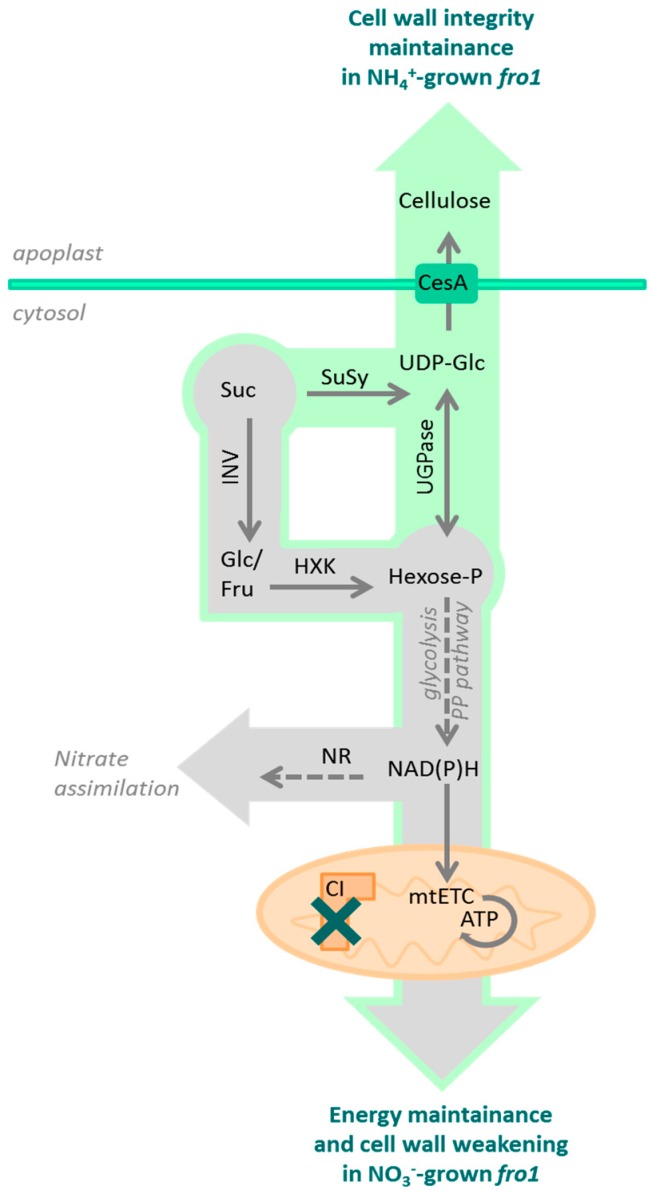Figure 10.
Carbohydrate metabolism in frostbite1 (fro1) mutants lacking complex I (CI), when cultured on NH4+ or NO3− as the sole nitrogen source. Sucrose, the major fixed carbon in plants, is channeled toward sugar catabolism via hexokinase (HXK) activity to generate hexose-phosphates (Hexose-P). Further, the glycolytic or pentose phosphate (PP) pathways provide reductants that can be oxidized in the mitochondrial electron transport chain (mtETC) to produce ATP. Alternatively to dissipation of reductants in the mtETC, high NAD(P)H expenditure is necessary for NO3− assimilation catalyzed by nitrate reductase (NR). As indicated by grey arrows both energy fluxes are required to maintain the growth of fro1 plants on NO3−. In contrast, when fro1 is grown on NH4+, the reaction catalyzed by NR is omitted, resulting in a surplus of reductants. Therefore, the lower energy flux towards energy synthesis in fro1 during NH4+ nutrition, allows sugars to be available for cell wall synthesis indicated as green arrow. Cytosolic sugars can provide a substrate for sucrose synthase (SuSy) or UDP-glucose phosphorylase (UGPase) to produce UDP-Glc, which is a precursor for cellulose synthesis. The cellulose synthetizing complex at the plasma membrane (containing cellulose synthase subunits, CesA) is responsible for the incorporation of carbohydrates into the cell wall.

